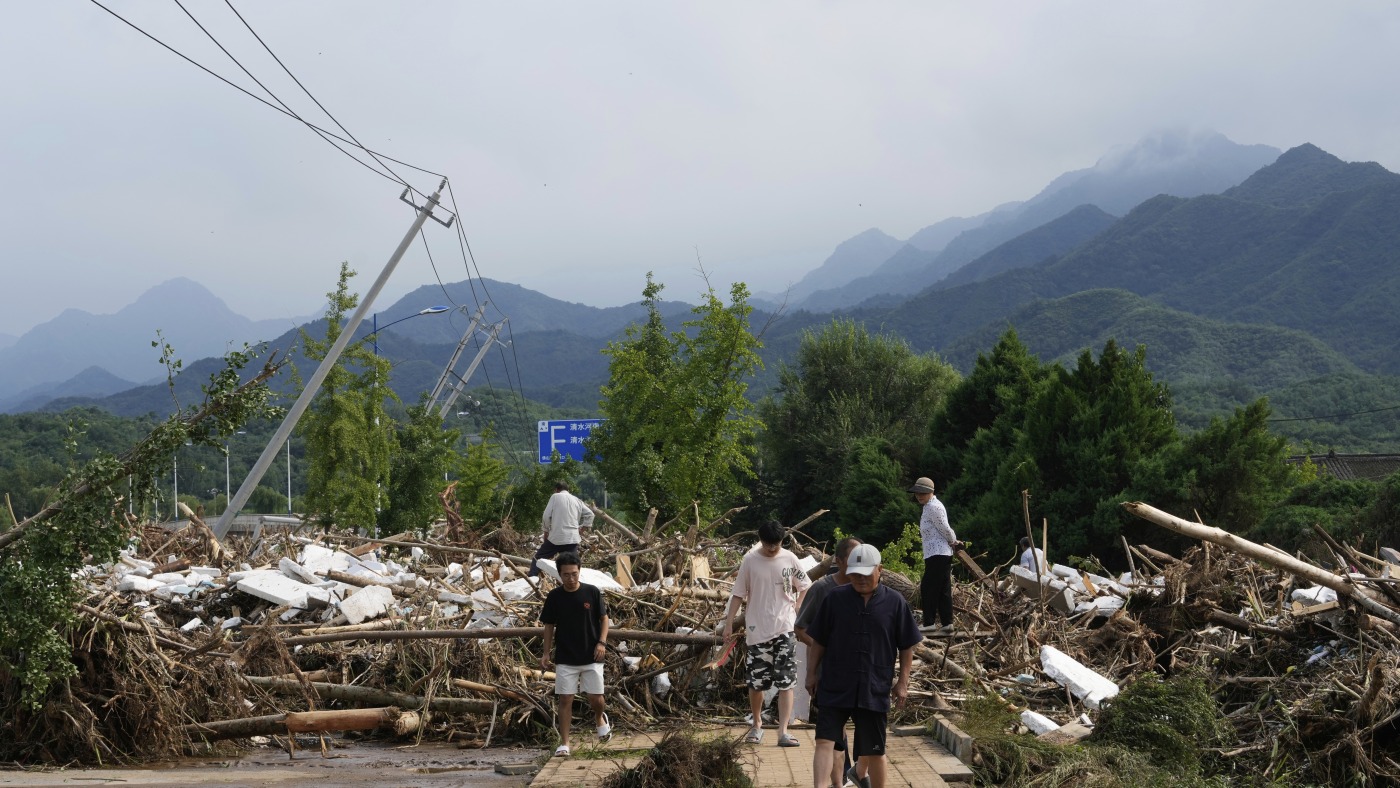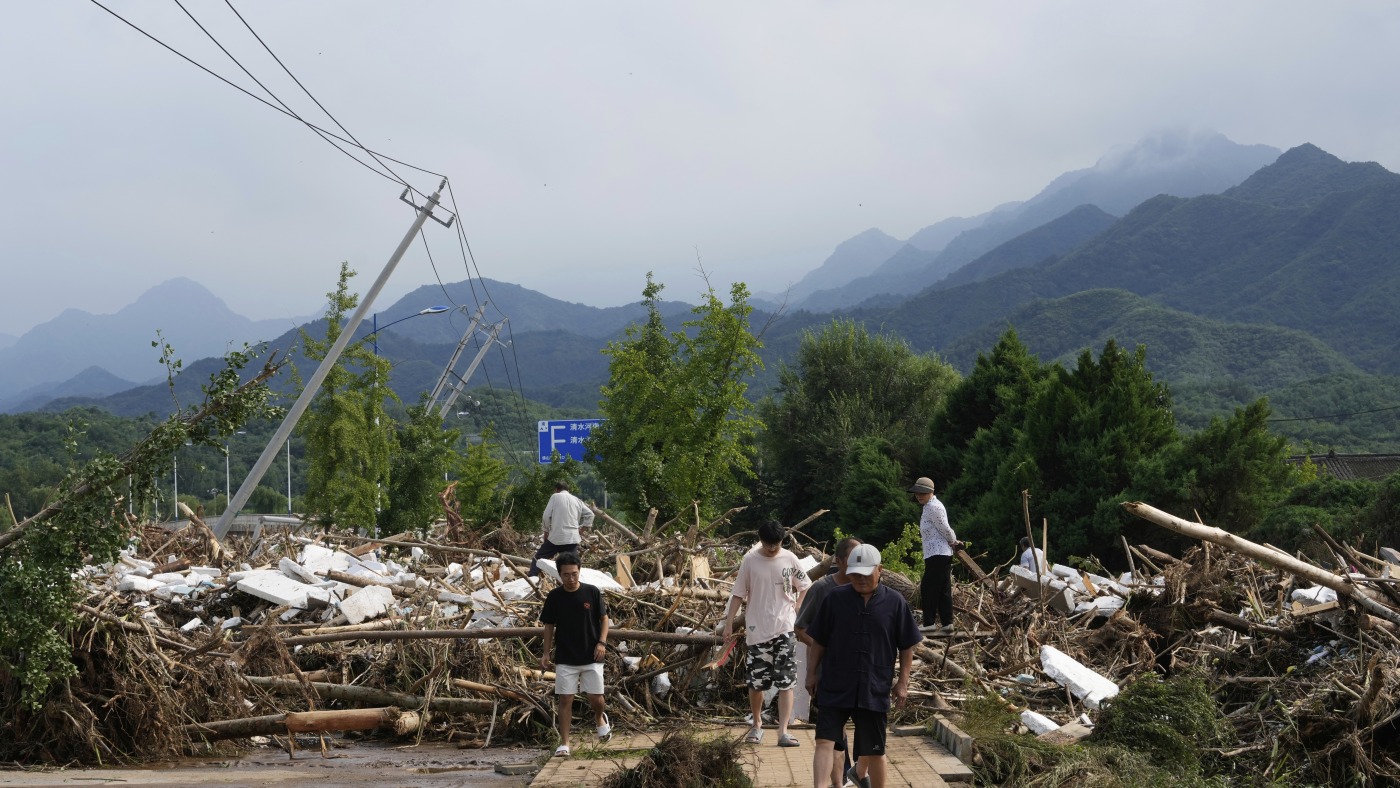The Devastating Floods in Beijing: A Call for Resilience and Climate Action
A City Under Water
The recent floods in Beijing have left an indelible mark on the city and its surroundings, revealing deep-seated vulnerabilities in infrastructure and disaster preparedness. The torrential rains, which brought nearly a year’s worth of precipitation in just a few days, overwhelmed drainage systems, causing rivers to overflow and streets to transform into raging torrents. The human toll has been severe, with at least 34 fatalities and over 80,000 people displaced from their homes. The economic and environmental damage is still being assessed, but the scale of destruction is undeniable. This disaster is not just a natural catastrophe—it is a wake-up call for China and the world to rethink urban planning, disaster management, and climate resilience.
The Unprecedented Rainfall and Its Devastating Impact
The sheer volume of rainfall that hit Beijing and its surrounding regions was unprecedented. Meteorological data shows that some areas received over 600 millimeters (24 inches) of rain in a matter of days, an amount typically seen over an entire year. This deluge was far beyond the capacity of existing drainage systems, leading to catastrophic flooding. Rivers such as the Chaobai and the Juma burst their banks, submerging entire neighborhoods and cutting off access to critical infrastructure.
The immediate consequences were devastating. Power outages affected more than 130 villages, leaving thousands without electricity for days. Communication networks were disrupted, making it difficult for emergency responders to coordinate relief efforts. Over 30 sections of roads were damaged or destroyed, isolating communities and hindering the movement of rescue teams. The agricultural sector also suffered significant losses, with flooded fields and drowned livestock threatening food security in the region.
The Human Cost: Lives Lost and Communities Displaced
Behind the statistics are heartbreaking stories of loss and displacement. Families have been torn apart, homes have been destroyed, and livelihoods have been disrupted. The Miyun district, a rural area northeast of Beijing, was particularly hard hit, with a disproportionate number of fatalities and evacuations. Many of those displaced are now living in temporary shelters, uncertain about when they can return to their homes or how they will rebuild their lives.
The psychological impact of such a disaster cannot be overstated. Survivors may suffer from post-traumatic stress disorder (PTSD), anxiety, and depression. Children, in particular, are vulnerable to long-term emotional and psychological effects. Mental health support services will be crucial in helping affected communities recover from this trauma.
Disaster Management and the Need for Reform
The Beijing floods have exposed critical weaknesses in disaster management and preparedness. While China has made significant progress in economic development, its ability to cope with extreme weather events remains a challenge. The sheer scale of the disaster overwhelmed local authorities, highlighting the need for a more robust and coordinated response.
Effective disaster management requires a multi-faceted approach:
Early Warning Systems
Accurate and timely weather forecasts are essential for providing advance warning to vulnerable populations. However, the effectiveness of these systems depends on public trust and understanding. Authorities must ensure that warnings are clear, accessible, and actionable, so that people can take necessary precautions.
Infrastructure Resilience
Investing in resilient infrastructure is crucial for mitigating the impact of extreme weather events. This includes upgrading drainage systems, reinforcing flood defenses, and ensuring that power grids and communication networks can withstand severe weather conditions. Sustainable urban planning, such as green spaces and permeable surfaces, can also help absorb excess water and reduce flood risks.
Emergency Response Capacity
Well-trained emergency response teams, equipped with the necessary resources and equipment, are vital for conducting search and rescue operations and providing assistance to affected communities. The Beijing floods have shown that local authorities need to be better prepared to handle large-scale disasters, with clear protocols and sufficient resources.
Public Awareness and Education
Raising public awareness about disaster risks and promoting preparedness measures can empower individuals and communities to take proactive steps to protect themselves. This includes educating people about evacuation routes, emergency supplies, and basic first aid.
Climate Change and the Future of Extreme Weather
While it is difficult to attribute any single weather event solely to climate change, the increasing frequency and intensity of extreme weather events around the world are consistent with the predicted impacts of a changing climate. Rising global temperatures are leading to more intense rainfall, prolonged droughts, and more frequent heatwaves. The Beijing floods are a stark reminder of the urgent need to address climate change.
Reducing greenhouse gas emissions and transitioning to a low-carbon economy are essential steps for mitigating the risks of future extreme weather events. In addition, investing in climate adaptation measures, such as improving infrastructure resilience and developing drought-resistant crops, is crucial for protecting vulnerable communities from the impacts of climate change.
Lessons Learned and the Path Forward
The Beijing floods offer valuable lessons for policymakers, urban planners, and communities alike. These lessons include:
The Importance of Integrated Risk Management
A holistic approach to risk management, encompassing prevention, preparedness, response, and recovery, is essential for building resilience to extreme weather events. This requires coordination between government agencies, private sector stakeholders, and local communities.
The Need for Sustainable Urban Development
Rapid urbanization can exacerbate flood risks if not accompanied by adequate investment in infrastructure and sustainable land-use planning. Cities must prioritize green infrastructure, such as wetlands and urban forests, to absorb excess water and reduce flood risks.
The Power of Community Engagement
Empowering local communities to participate in disaster preparedness and response efforts can enhance their resilience and reduce their vulnerability. Community-based disaster risk management (CBDRM) programs can help build local capacity and foster a culture of preparedness.
A Wake-Up Call for a Changing World
The floods in Beijing are more than just a local tragedy—they are a stark reminder of the increasing vulnerability of our world to extreme weather events. The images of flooded streets, displaced families, and the heartbreaking loss of life should serve as a wake-up call, urging us to take immediate and decisive action to address climate change and build more resilient communities.
The future depends on our collective commitment to creating a safer, more sustainable world for all. This means prioritizing climate action, investing in disaster risk reduction, and promoting sustainable development practices. Only through concerted efforts can we hope to protect our communities from the devastating impacts of extreme weather events. The time to act is now.








